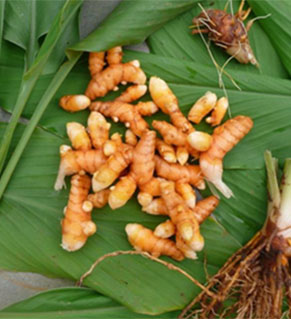Ayurveda first seeks to diagnose patient condition before treating them with internal preparations, diet and habit restrictions. Plant based preparations play a major role in the Ayurvedic healing process. In broad terms, there is no substance in the world that cannot be used as a potential medicine (“jagathyevamanoushadam”). The best of medicine can be harmful if improperly used, of 10000 plants used for medicinal purpose, in the Indian subcontinent; only 1200 to 1500 have been incorporated in to the official ayurvedic pharmacopeia in more than 3000years.
Approximately 90% of ayurvedic preparations are plant based. Ayurvedic plants have a stronger action on the body than either food or spices, such actions enable the plant to reverse pathophysiological process and stabilize the doshas. For this reason one should use such plants with caution. Classical ayurvedic preparations made from such plants are known as “yogas” in Sanskrit. Yogas have developed following years of practical experience combining plants to get the optimal effect.
Ayurvedic medicines are administered according to the Prakrti of a person. It holds that right combination of herbs greatly increases their healing power. Herbs often have more than one action.

Modes of Herbal Preparations
There are mainly five types of preparations in Ayurveda, collectively known as PanchaVidhaKashayaKalpa
- Svarasa - The juice of the plant, which is the strongest of all, is extracted by pounding or grinding it in a blender.
- Kalka - The herbs are crushed and made into a pulp form in the required consistency by adding sufficient water.
- Kvatha - It is prepared by boiling the herbs in water until the preparation is reduced to one-fourth of the original amount.
- Phantam - Hot infusion is obtained by immersing the herbs in hot water for some time.
- Hima - The herbs are soaked in cold water overnight for preparing a cold infusion.The herbs are prepared in other forms as well such as Churna (Powders), Guti (Pills) and Vati (Tablets).
USEFUL HERBS AND DRUGS
 Botanical Name - Zingiber Officinale
Botanical Name - Zingiber Officinale
Dried Ginger - Shunti
Dried ginger is widley used drug and a condiment in kerala. It is one of the most important drug in many of Ayurvedic preparation. It is used in dry cough, fever, indigestion.dry Ginger water is used in balancing kapha and vathadoshas.It is an appetizer and digestant.
 Botanical Name – Piper Nigrum
Botanical Name – Piper Nigrum
Black pepper – Maricha
Black pepper is rich in antioxidants, anti inflammatory properties,A pinch of black pepper added to any recipe works as more than just a flavor enhancer. Often called the king of spices, black pepper is known to offer a number of health benefits while providing an excellent depth of flavor to any dish. The use of black pepper in the diet helps promote weight loss, improve digestion, relieve cold and cough, boost metabolism, and treat skin problems.
 Botanical Name – Curcuma Longum
Botanical Name – Curcuma Longum
Turmeric – Haridra
It is an antiseptic, antiparasitic, antiallergic, anticancerous,antidabetic and blood purifier.it alleviates kapha and pitha .Curcumin is the main active ingredient in turmeric. It has powerful anti-inflammatory effects and is a very strong antioxidant.. It’s known that inflammation and oxidative damage play a role in Alzheimer's disease, and curcumin has beneficial effects on both.
 Botanical Name - Azardirachta Indica
Botanical Name - Azardirachta Indica
Neem – Indian lilac
Neem products are also used in selectively controlling pests in plants. Neem is considered a part of Ayurvedic medicine. Neem is also known as the' village pharmacy'. Neem oil is used for preparing cosmetics, and is useful for skin care such as acne treatment.It purifies the blood , and in chronic diabetic ulcers.It stimulates the action of liver.
 Botanical Name - Emblica Officinalis
Botanical Name - Emblica Officinalis
Gooseberry – Amalaki
Being one of the richest source of Vitamin C, Amla enhances nutrient absorption, eliminates free radicals, and helps in flushing out toxins from the system. And acts as a powerful antioxidant. In Spite of knowing the enormous health benefits of Amla. Amalaki is an excellent plant for rejuvenation , as nourishment and as an tonic .The powerful anti oxidants present in Amla get you rid of free radicals which are the main cause of wrinkles , blemishes and age spots. Besides the above mentioned benefits, Amla also improves immunity , appetite, hair quality , and eye health.
 Botanical Name - Aloe Barbadensis
Botanical Name - Aloe Barbadensis
Aloe Vera – Kumari
Aloe Vera has been known for its healing properties. In the early days, the plant was known for being a “plant of immortality, also known as “burn plant,” “lily of the desert,” and “elephant’s gall” — to help treat wounds, hair loss, haemorrhoids, and digestive issues. There are two medicinally useful parts of the aloe Vera plant. First, the leaves are filled with a clear gel. This gel is extracted from the plant and usually used on the skin to treat burns and various skin conditions……The second substance the plant produces is called aloe latex. This is the yellow pulp that’s found just under the outer part of the plant leaf. Aloe latex has been shown to have laxative properties, and it’s usually taken orally to treat constipation...
